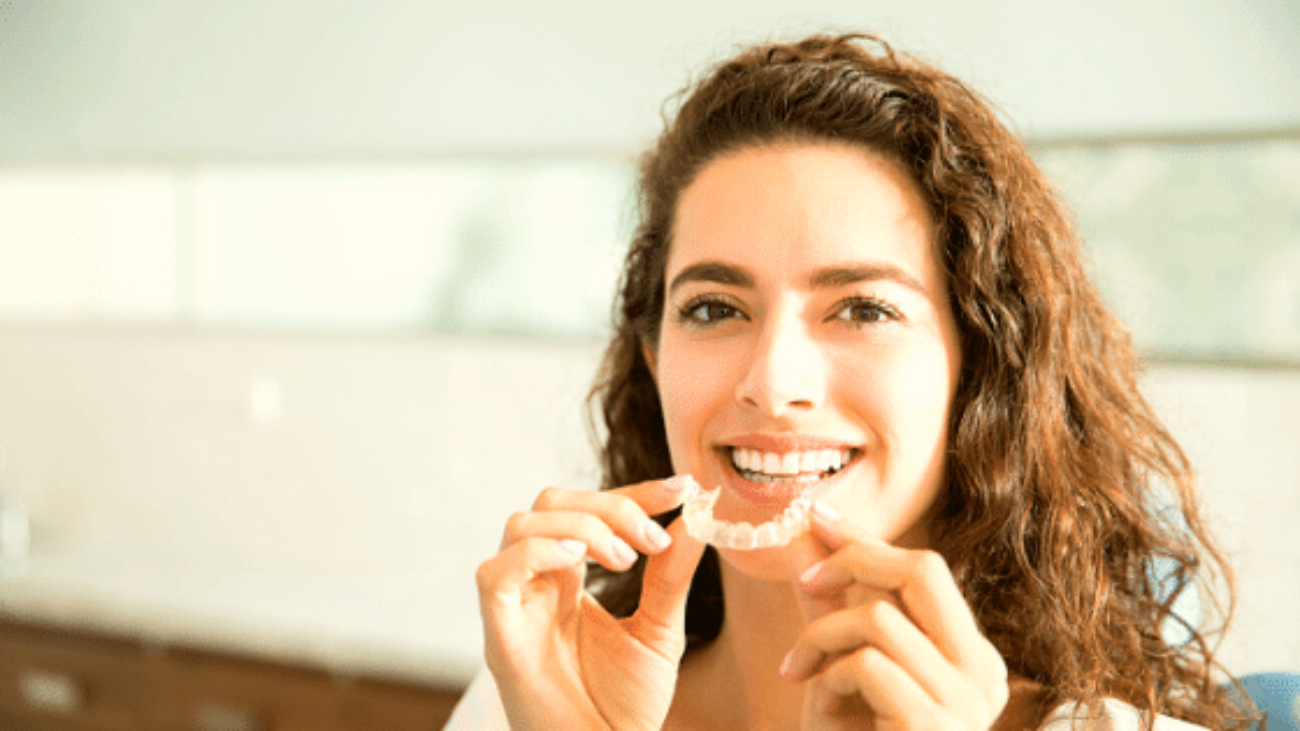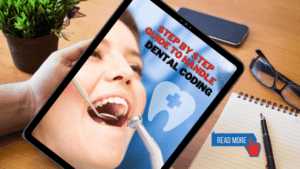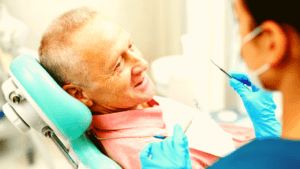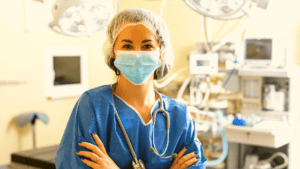Dental coding in billing and coding can be really tricky, if not considered in the right manner. Not all codes are used for all the procedures or diagnosis. Each code represents a unique behavior. The healthcare professional finds it even more soothing while added to the practice for revenue generation. But, it won’t and can’t be the same with all. Most dental professionals find it even more hectic to follow with the newborn codes every year. CDT dental coding appears to be normal just like in medical billing, only if learned and studied thoroughly or frequently.
The previous article represented a set of codes in detail which can be really helpful for dental coding professionals as well as healthcare teams to put them into practice. This article also states another set of codes that motivates professionals to find out the best way to use dental coding in their key areas.
Dental Coding Part-2:
- D6100Implant removal, by report [This procedure involves the surgical removal of an implant].
- D6101Debridement of a peri-implant defect or defects surrounding a single implant, and surface cleaning of the exposed implant surfaces, including flap entry and closure.
- D6102Debridement and osseous contouring of a peri-implant defect or defects surrounding a single implant. It includes surface cleaning of the exposed implant surfaces and including flap entry and closure.
- D6103Bone graft for repair of peri-implant defect- does not include flap entry and closure
- D6104Bone graft at the time of implant placement
- D6199Unspecified implant procedure, by report
- D7251Coronectomy-intentional partial tooth removal
- D7285 Biopsy of oral tissue-hard (bone, tooth) [For removal of specimen only. This code involves biopsy of osseous lesions and is not used for apicoectomy/periradicular surgery].
- D7286Biopsy of oral tissue-soft [For surgical removal of an architecturally intact specimen only. This code is not used at the same time as codes for apicoectomy/periradicular curettage].
- D7287 Exfoliative cytological sample collection [For a collection of non-transepithelial cytology sample via mild scraping of the oral mucosa].
- D7295Harvest of bone for use in autogenous grafting procedures
- D7310Alveoloplasty in conjunction with extractions-four or more teeth or tooth spaces, per quadrant
- D7320Alveoloplasty not in conjunction with extractions-four or more teeth or tooth spaces, per quadrant
- D7340Vestibuloplasty-ridge extension (secondary epithelialization)
- D7350 Vestibuloplasty-ridge extension (including soft tissue grafts, muscle reattachment, revision of soft tissue attachment, and management of hypertrophied and hyperplastic tissue)
- D7410 Excision of benign lesion up to 1.25 cm
- D7411 Excision of benign lesion greater than 1.25 cm
- D7412Excision of benign lesion, complicated [Requires extensive undermining with the advancement of rotational flap closure].
- D7413 Excision of malignant lesion up to 1.25 cm
- D7414 Excision of malignant lesion greater than 1.25 cm
- D7415 Excision of malignant lesion, complicated [Requires extensive undermining with the advancement of rotational flap closure].
- D7440 Excision of malignant tumor-lesion diameter up to 1.25 cm
- D7441 Excision of malignant tumor-lesion diameter over 1.25 cm
- D7450 Removal of benign odontogenic cyst or tumor-lesion diameter up to 1.25cm
- D7451 Removal of benign odontogenic cyst or tumor-lesion diameter greater than 1.25 cm
- D7460 Removal of benign non-odontogenic cyst or tumor-lesion diameter up to 1.25 cm
- D7461Removal of benign non-odontogenic cyst or tumor-lesion diameter greater than 1.25 cm
- D7465 Destruction of lesion(s) by physical or chemical method, by report [Examples include using cryo, laser or electro surgery].
- D7471 Removal of lateral exostosis (maxilla or mandible)
- D7472 Removal of torus palatinus
- D7473 Removal of torus mandibularis
- D7485 Surgical Reduction of osseous tuberosity
- D7490 Radical resection of maxilla or mandible [Partial resection of maxilla or mandible; removal of lesion and defect with a margin of the normal-appearing bone. Reconstruction and bone grafts should be reported separately]
- D7510 Incision and drainage of abscess-intraoral soft tissue [Involves incision through the mucosa, including periodontal origins].
- D7520 Incision and drainage of abscess-extraoral soft tissue [Involves incision through the skin].
- D7530Removal of foreign body from mucosa, skin, or subcutaneous alveolar tissue.
- D7540 Removal of the reaction producing foreign bodies, musculoskeletal system [May include, but is not limited to, removal of splinters, pieces of wire, etc., from muscle and/or bone].
- D7550Partial ostectomy/sequestrectomy for removal of non-vital bone [Removal of loose or sloughed-off dead
- bone caused by infection or reduced blood supply].
- D7560 Maxillary sinusotomy for removal of tooth fragment or foreign body
- D7610 Maxilla-open reduction; (teeth immobilized, if present) [Teeth may be wired, banded, or splinted together to prevent movement. The surgical incision required for interosseous fixation].
- D7620 Maxilla-closed reduction; (teeth immobilized, if present) [No incision required to reduce the fracture. See D7610if interosseous fixation is applied].
- D7630 Mandible-open reduction; (teeth immobilized, if present) [Teeth may be wired, banded, or splinted together to prevent movement].
- D7640 Mandible-closed reduction; (teeth immobilized, if present) [No incision required to reduce the fracture. See
- D7630if interosseous fixation is applied].
- D7650 Malar and/or zygomatic arch-open reduction
- D7660Malar and/or zygomatic arch-closed reduction
- D7670 Alveolus-closed reduction may include stabilization of teeth [Teeth may be wired, banded, or splinted together to prevent movement].
- D7671Alveolus-open reduction may include stabilization of teeth [Teeth may be wired, banded, or splinted together to prevent movement].
- D7680 Facial bones-complicated reduction with fixation and multiple surgical approaches [Facial bones include upper and lower jaw, cheek, and bones around eyes, nose, and ears].
- D7710 Maxilla-open reduction [Surgical incision required to reduce fracture].
- D7720Maxilla-closed reduction
- D7730 Mandible-open reduction [Surgical incision required to reduce fracture].
- D7740 Mandible-closed reduction
- D7750 Malar and/or zygomatic arch-open reduction [Surgical incision required to reduce fracture].
- D7760 Malar and/or zygomatic arch-closed reduction
- D7770 Alveolus-open reduction stabilization of teeth [Fractured bone(s) are exposed to mouth or outside the face. The surgical incision required to reduce fracture].
- D7771Alveolus-closed reduction stabilization of teeth [Fractured bone(s) are exposed to mouth or outside the face].
- D7780 Facial bones-complicated reduction with fixation and multiple surgical approaches [Surgical incision required to reduce the fracture. Facial bones include upper and lower jaw, cheek, and bones around eyes, nose, and ears].
- D7810 Open reduction of dislocation [Access to TMJ via surgical opening].
- D7820 Closed reduction of dislocation [Joint manipulated into place; no surgical exposure].
- D7830 Manipulation under anesthesia [Usually done under general anesthesia or intravenous sedation].
- D7840 Condylectomy [Surgical removal of all or portion of the mandibular condyle (separate procedure)]
- D7850Surgical discectomy, with/without implant [Excision of the intra-articular disc of a joint].
- D7852 Disc repair [Repositioning and/or sculpting of the disc; repair of perforated posterior attachment].
- D7854 Synovectomy [Excision of a portion or all of the synovial membrane of a joint].
- D7856Myotomy [Cutting of muscle for therapeutic purposes (separate procedure)].
- D7858Joint reconstruction [Reconstruction of osseous components including or excluding soft tissues of the joint with autogenous, homologous, or alloplastic materials].
- D7860 Arthrotomy [Cutting into the joint (separate procedure)].
- D7865Arthroplasty [Reduction of osseous components of the joint to create a pseudoarthrosis or eliminate an irregular remodeling pattern (osteophytes)].
- D7870 Arthrocentesis [Withdrawal of fluid from a joint space by aspiration].
- D7872 Arthroscopy-diagnosis, with or without biopsy
- D7873Arthroscopy-surgical: lavage and lysis of adhesions [Removal of adhesions using the arthroscope and lavage of the joint cavities].
- D7874Arthroscopy-surgical: disc repositioning and stabilization [Repositioning and stabilization of disc using arthroscopic techniques].
- D7875Arthroscopy-surgical: synovectomy [Removal of inflamed and hyperplastic synovium (partial/complete) via an arthroscopic technique].
- D7876 Arthroscopy-surgical: discectomy [Removal of the disc and remodeled posterior attachment via the arthroscope].
- D7877Arthroscopy-surgical: debridement [Removal of pathologic hard and/or soft tissue using the arthroscope].
- D7880Occlusal orthotic device, by report [Presently includes splints provided for treatment of temporomandibular joint dysfunction].
- D7899Unspecified TMD therapy, by report
- D7910 Suture of recent small wounds up to 5 cm
- D7911Complicated suture-up to 5 cm
- D7912 Complicated suture-greater than 5 cm
- D7920Skin graft (identify defect covered, location, and type of graft)
- D7921 Collection and application of autologous blood concentrate product
- D7922 Placement of intra-socket biological dressing to aid in hemostasis or clot stabilization, per site
- D7941Osteotomy-mandibular rami
- D7943 Osteotomy-mandibular rami with bone graft [includes obtaining the graft]
- D7944 Osteotomy-segmented or subapical [Reports by a range of tooth numbers with segment].
- D7945 Osteotomy-body of mandible Surgical section of the lower jaw. This includes surgical exposure, bone cut, fixation, routine wound closure, and normal post-operative follow-up care].
- D7946LeFort I (maxilla-total) [Surgical section of the upper jaw. This includes surgical exposure, bone cuts, down fracture, repositioning, fixation, routine wound closure, and normal post-operative follow-up care].
- D7947 LeFort I (maxilla-segmented) [When reporting a surgically assisted palatal expansion without down fracture, this code would entail a reduced service and should be “by report.”]
- D7948 LeFort II or LeFort III (osteoplasty of facial bone for midface hypoplasia or retrusion)-without bone graft [Surgical section of the upper jaw. This includes surgical exposure, bone cuts, down fracture, segmentation of maxilla, repositioning, fixation, routine wound closure, and normal post-operative follow-up care].
- D7949 LeFort II or LeFort III-with bone graft [Includes obtaining autografts].
- D7950 Osseous, osteoperiosteal, or cartilage graft of the mandible or maxilla-autogenous or nonautogenous, by report [This code may be used for ridge augmentation or reconstruction to increase height, width, and/or volume of the residual alveolar ridge. It includes obtaining autograft and/or allograft material. Placement of a barrier membrane, if used, should be reported separately].
- D7955 Repair of maxillofacial soft and/or hard tissue defect [Reconstruction of surgical, traumatic, or congenital defects of the facial bones, including the mandible, may utilize autograft, allograft, or alloplastic materials in conjunction with soft tissue procedure to repair and restore the facial bones to form and function. This does not include obtaining the graft and these procedures may require multiple surgical approaches. This procedure does not include edentulous maxilla and mandibular reconstruction for prosthetic considerations. See code D7950].
- D7960Frenulectomy (frenectomy or frenotomy)-separate procedure [The frenum may be excised when the tongue has limited mobility; for large diastemas between teeth; or when the frenum interferes with a prosthetic appliance; or when it is the etiology of periodontal tissue disease]. (Deleted 12/31/2020)
- D7961 Buccal / labial frenectomy (frenulectomy) (Effective 01/01/2021)
- D7962 Lingual frenectomy (frenulectomy) (Effective 01/01/2021)
- D7970 Excision of hyperplastic tissue-per arch
- D7971 Excision of pericoronal gingiva [Surgical removal of inflammatory or hypertrophied tissues surrounding partially erupted/impacted teeth].
- D7972 Surgical reduction of fibrous tuberosity
- D7980 Sialolithotomy
- D7981 Excision of the salivary gland, by report
- D7982 Sialodochoplasty [Surgical procedure for the repair of a defect and/or restoration of a portion of a salivary gland duct].
- D7983 Closure of salivary fistula [Surgical closure of an opening between a salivary duct and/or gland and the cutaneous surface or an opening into the oral cavity through other than the normal anatomic pathway].
- D7990 Emergency tracheotomy [Surgical formation of a tracheal opening usually below the cricoid cartilage to allow for respiratory exchange].
- D7991Coronoidectomy [Surgical removal of the coronoid process of the mandible].
- D7993 Surgical placement of craniofacial implant – extraoral (Effective 01/01/2021)
- D7994 Surgical placement: zygomatic implant (Effective 01/01/2021)
- D7995 Synthetic graft-mandible or facial bones, by report [Includes allogenic material].
- D7996 Implant-mandible for augmentation purposes (excluding alveolar ridge), by report
- D7999 Unspecified oral surgery procedure, by report
- D9210 Local anesthesia not in conjunction with operative or surgical procedures
- D9211 Regional block anesthesia coding
- D9212Trigeminal division block anesthesia
- D9215 Local anesthesia in conjunction with operative or surgical procedures
- D9219 Evaluation for deep sedation or general anesthesia
- D9310 Consultation diagnostic service provided by dentist or physician other than requesting dentist or physician [A patient encounter with a practitioner whose opinion or advice regarding evaluation and/or management of a specific problem; may be requested by another practitioner or appropriate source. The consultation includes an oral evaluation. The consulted practitioner may initiate diagnostic and/or therapeutic services].
- D9410 House/extended care facility call [Includes visits to nursing homes, long-term care facilities, hospice sites, institutions, etc. A report in addition to reporting appropriate code numbers for actual services performed].
- D9420 Hospital call [May be reported when providing treatment in a hospital or ambulatory surgical center, in addition to reporting appropriate code numbers for actual services performed].
- D9430 Office visit for observation (during regularly scheduled hours)-no other services performed
- D9440 Office visit-after regularly scheduled hours
- D9450Case presentation, detailed and extensive treatment planning [Not performed on the same day as evaluation].
- D9610 Therapeutic parenteral drug, single administration [Includes single administration of antibiotics, steroids, anti-inflammatory drugs, or other therapeutic medications. This code should not be used to report the administration of sedative, anesthetic or reversal agents].
- D9985 Sales tax
- D9986 Missed appointment
- D9987Cancelled appointment
- D9997 Dental case management-patients with special health care needs
- D9999 Unspecified adjunctive procedure, by the report
- D0120Periodic oral evaluation-established patient [An evaluation performed on a patient of record to determine any changes in the patient’s dental and medical health status since a previous comprehensive or periodic evaluation. This includes an oral cancer evaluation, periodontal screening where indicated and may require interpretation of information acquired through additional diagnostic procedures. Report additional diagnostic procedures separately].
- D0140Limited oral evaluation-problem focused [An evaluation limited to a specific oral health problem or complaint. This may require the interpretation of information acquired through additional diagnostic procedures. Report additional diagnostic procedures separately. Definitive procedures may be required on the same date as the evaluation. Typically, patients receiving this type of evaluation present with a specific problem and/or dental emergencies, trauma, acute infections, etc.]
- D0145 Oral evaluation for a patient under three years of age and counseling with primary caregiver [Diagnostic and preventive services performed for a child under the age of three, preferably within the first six months of the eruption of the first primary tooth, including recording the oral and physical health history, evaluation of caries susceptibility, development of an appropriate preventive oral health regimen and communication with and counseling of the child’s parent, legal guardian and/or primary caregiver].
- D0160 Detailed and extensive oral evaluation-problem focused, by the report [A detailed and extensive problem-focused evaluation entails extensive diagnostic and cognitive modalities based on the findings of a comprehensive oral evaluation. Integration of more extensive diagnostic modalities to develop a treatment plan for a specific problem is required. The condition requiring this type of evaluation should be described and documented. Examples of conditions requiring this type of evaluation may include dentofacial anomalies, complicated period-prosthetic conditions, complex temporomandibular dysfunction, facial pain of unknown origin, conditions requiring multi-disciplinary consultation, etc.]
- D0170 Re-evaluation-limited, problem-focused (established patient; not post-operative visit) [Assessing the status of a previously existing condition].
- D0171 Re-evaluation-post-operative office visit
- D0180 Comprehensive periodontal evaluation-new or established patient [This procedure is indicated for patients showing signs or symptoms of periodontal disease and for patients with risk factors such as smoking or diabetes. It includes evaluation of periodontal conditions, probing and charting, evaluation and recording of the patient’s dental and medical history, oral cancer evaluation, and general health assessment. It may include the evaluation and recording of dental caries, missing or unerupted teeth, restorations, occlusal relationships, and oral cancer evaluation].
- D0190 Screening of a Patient [A screening, to determine an individual’s need to be seen by a dentist for diagnosis]
- D0191 Assessment of a patient; A limited clinical inspection that is performed to identify possible signs of oral or systemic disease, malformation, or injury, and the potential need for referral for diagnosis and treatment.
- D0273 Bitewings-three radiographic images
- D0364 Cone Beam CT capture and interpretation with a limited field of view less than one whole jaw
- D0365 Cone Beam CT capture and interpretation with the field of view of one full dental arch-mandible
- D0366 Cone Beam CT capture and interpretation with the field of view of one full dental arch-maxilla, with or without cranium
- D0367 Cone Beam CT capture and interpretation with the field of view of both jaws; with or without cranium
- D0368 Cone Beam CT capture and interpretation for TMJ series including two or more exposures
- D0369Maxillofacial MRI capture and interpretation
- D0370 Maxillofacial ultrasound capture and interpretation
- D0371 Sialoendoscopy capture and interpretation
- D0380 Cone Beam CT image capture with a limited field of view less than one whole jaw
- D0381 Cone Beam CT image capture with the field of view of one full dental arch-mandible
- D0382 Cone Beam CT image capture with the field of view of one full dental arch-maxilla, with or without cranium
- D0383 Cone Beam CT image capture with the field of view of both jaws, with or without cranium
- D0384 Cone Beam CT image capture for TMJ series including two or more exposures
- D0385 Maxillofacial MRI image capture
- D0386 Maxillofacial ultrasound image capture
- D0391 Interpretation of diagnostic image by a practitioner not associated with the capture of the image, including report
- D0393 Treatment simulation using 3D image volume
- D0394 Digital subtraction of two or more images or image volumes of the same modality
- D0395Fusion of two or more 3D image volumes of one or more modalities
- D0411 HbA1c in-office point of service testing
- D0412 Blood glucose level test
- D0414 Laboratory processing of microbial specimen to include culture and sensitivity studies, preparation and transmission or written report
- D0415 Collection of microorganisms
- D0417 Collection and preparation of saliva sample for laboratory diagnostic testing
- D0418 Analysis of saliva sample [Chemical or biological analysis of saliva sample for diagnostic purposes].
- D0419 Assessment of salivary flow by measurement
- D0422 Collection and preparation of genetic sample material for laboratory analysis and report
- D0423 Genetic test for susceptibility to diseases-specimen analysis
- D0425 Caries Susceptibility Tests
- D0470 Diagnostic casts [Also known as diagnostic models or study models]
- D0486 Laboratory accession of the transepithelial cytologic sample, microscopic examination, preparation, and transmission of written report [To be used in pathology laboratory reporting transepithelial, disaggregated cell samples by brush biopsy technique].
- D0604 Antigen testing for a public health-related pathogen, including Coronavirus (Effective 01/01/2021)
- D0605 Antibody testing for a public health-related pathogen, including Coronavirus (Effective 01/01/2021)
- D1110 Prophylaxis-Adult [Removal of plaque, calculus, and stains from the tooth structures and implants in the permanent and transitional dentition. It is intended to control local irritational factors].
With keen observation, concentrate on the codes that have to be used for the procedures or the diagnosis. For better output, outsource your dental coding to the best medical billing and coding companies which brings great revenue profits. Click here to read the other parts.
If you wish to learn more about dental coding, don’t forget to subscribe to our blog. Write to us in the comment section for any suggestions and we shall consider them. Your valuable feedback is essential. Do follow us on social media portals to learn more about healthcare.




